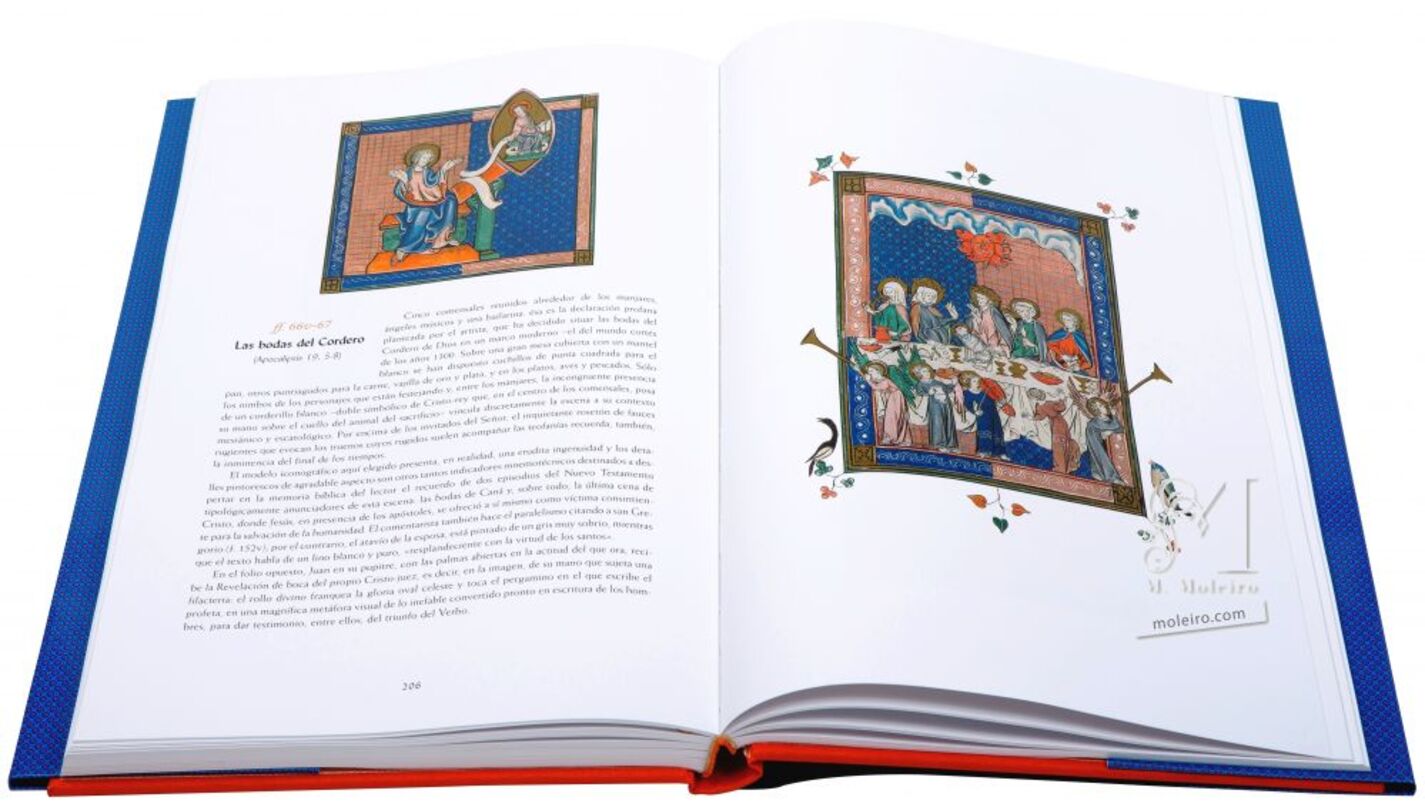Folios 66v-67 The marriage of the Lamb (Rev. 19: 5-8)
Five guests gathered around a meal, several angel musicians and a dancer. This is the pagan backdrop depicted by the artist who has chosen a modern setting – the courtly world of the 1300s – for the marriage of the Lamb of God. Upon the white tablecloth covering a large table, square-ended bread knives can be seen along with sharp knives for meat, and gold and silver dishes. Chicken and fish are laid out on plates. The nimbi of the figures busy celebrating and the incongruous presence of a small, white lamb amongst the food – a symbolic double of the Christ King at the centre of the table placing his hand on the neck of the sacrificial animal – are the only elements discreetly linking the scene to its messianic and eschatological context. Above the Lord’s guests, the disturbing rosette of growling mouths evoking the roaring thunder that often accompanies the theophany, once again recalls that the end of time is nigh.
The iconographic framework employed here does in fact cultivate a scholarly ingenuity, and the picturesque details so pleasing to the eye are mnemotechnical indicators designed to bring to mind in the reader’s biblical memory two New Testament episodes whose typology heralds in this scene: the wedding feast at Canaan and, particularly, the Last Supper where Jesus, in the presence of the apostles, offered himself as a consenting victim for the salvation of humanity. The parallel is remarked upon, moreover, by the commentator (f. 152v) who quotes St Gregory. However, even though the text mentions pure, white linen “gleaming with the virtue of the saints”, the wife’s garb is painted a very plain grey.
On the facing folio, John at his desk, with his hands open as if at prayer, receives the Revelation from the very mouth of the Christ Judge, i.e. in the illustration, from the hand holding a phylactery. The holy scroll overlaps the heavenly mandorla and touches the parchment on which the prophet is writing in what amounts to a magnificent visual metaphor of the Ineffable about to be transformed into the writing of humanity, thereby bearing witness amongst them to the triumph of the Word.
Marie-Thérèse Gousset and Marianne Besseyre
Centre de Recherche sur les Manuscrits Enluminés, Bibliothèque nationale de France
Fragment of the commentary volume of The Apocalypse of 1313
